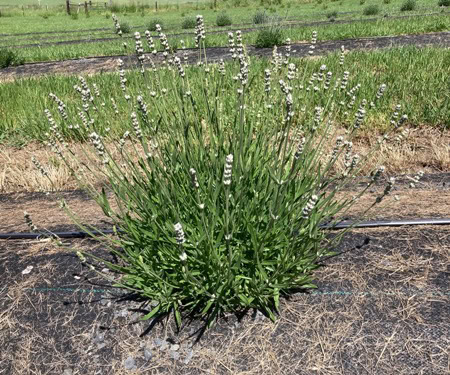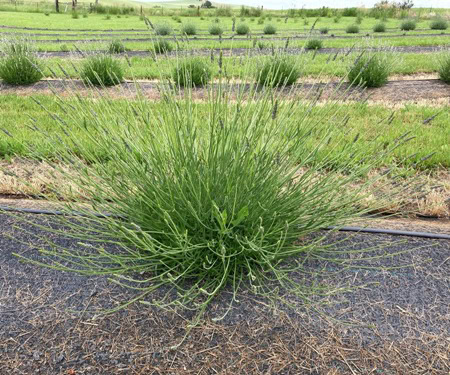Our Lavender
Lavender (Lavandula genus) is a herb in the mint family (Lamiaceae) which grows as a semi-woody perennial shrub. Currently, there are over 45 different lavender species with over 450 cultivars. At Bald Butte Lavender Farm we grow cultivars from the English (Lavandula angustifolia) and Lavandin (Lavandula x intermedia) lavender species. These species grow in the northern latitudes within USDA hardiness zones 5-9. The following sections briefly describe and contrast both species. In addition, characteristics describing our lavender cultivars are listed in the attached drop down tables.
English Lavender
Lavandula angustifolia, commonly known as “true” lavender, is propagated from both seed and rooted cuttings. Plants produced from seed have the genetic variability inherent within each cultivar, and will thus display slight differences in physical characteristics between mature plants. On the other hand, rooted cuttings are genetic clones of the mother plant from which the cuttings were taken, and will thus be identical to the mother plant. The English lavenders are typically smaller and more compact, and range from 1-3 feet in height and 2-3 feet in width with shorter flower stems. The cultivars have a single flower head on each unbranched stem, and the flowers are sweeter and more floral in fragrance. English cultivars flower from early spring to early summer for 3-4 weeks. In addition, many cultivars will have a second bloom if the first bloom is harvested early in the season.
English cultivars produce considerably less essential oil than Lavandin lavenders. However, the English lavenders have higher quality essential oil. All cultivars are described as delicious in taste, but Melissa is often rated the best. Other popular culinary cultivars include Folgate, Miss Katherine, Royal Velvet, Buena Vista, Purple Bouquet, and Avice Hill. Of course, taste varies between individuals, and as such can best be described in the eye of the beholder.
Lavandin Lavender
Lavandula x intermedia, a hybrid cross between English and Portuguese lavender (Lavandula latifolia), is only propagated from rooted cuttings. The cultivars grow larger than English lavenders with up to 4 foot widths and 3 foot heights. The flowers bloom later in July to September with branched flower spikes which reach up to 30 inches in length. The longer flower stems produce better quality cut and dried flowers, and are better suited for crafts such as wreaths and wands. Many cultivars will have a second bloom if the first bloom is harvested early in the season.
Grosso is the most widely grown oil producing lavender cultivar in the world. In general, the hybrid cultivars have a stronger fragrance which many people associate with the typical lavender aroma. While both lavender species are edible, the higher levels of camphor in the hybrid cultivars often leave a medicinal or soapy aftertaste.


